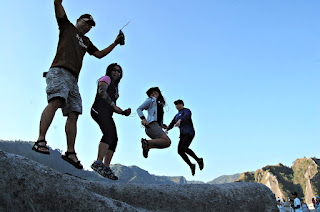
Mount Pinatubo is one of the most famous active stratovolcanoes in the Philippines, forever etched in history for its catastrophic eruption on June 15, 1991. It was the second largest terrestrial volcanic eruption of the 20th century, only surpassed by the 1912 Novarupta eruption in Alaska.
🌋 A Blast from History: The 1991 Eruption






I was in high school when Mount Pinatubo erupted. Back then, in my hometown of Marinduque, we woke up to a mysterious white covering—ash from the volcano thousands of kilometers away in Zambales. We didn’t know the full extent of the disaster until later that day.


The eruption devastated vast areas, forcing tens of thousands of residents to evacuate—widely regarded as one of the most successful rescues in a catastrophic event. The eruption’s fury was worsened by Typhoon Diding (Yunya), which mixed rain with ash, creating dangerous lahars (volcanic mudflows) and reshaping the landscape dramatically.
🏞️ The Birth of the Crater Lake




Before the eruption, Mount Pinatubo's summit stood at 1,745 meters (5,725 ft). The explosion blasted away the peak and created a huge crater that eventually filled with rainwater, forming the now-famous Pinatubo Crater Lake — a stunning turquoise gem set amidst rugged volcanic rock.
🚙 The Adventure Begins: Getting to the Crater




Visiting the crater was a dream come true. After several failed attempts due to weather, my office mates and I finally made it.




- First, we registered at the Local Tourism Office in Sta. Juliana, Capas, Tarlac.
- Then came the wild ride: a 1.5-hour bumpy 4x4 jeepney journey across barren, volcanic landscapes dotted with dramatic rock formations.
- After a brief photo stop, we were dropped off where the vehicle could no longer continue.
The jeep ride felt like a movie chase scene, full of suspense and adventure through a lunar-like terrain.
🥾 The Trek to the Crater




From the drop-off point, the trek to the crater took less than 20 minutes (or so they say!). For us, it felt like forever, especially with the muddy path from recent rains and the constant drizzle slowing us down.


Tips for trekking Mount Pinatubo:
- Bring plenty of water, a hat or umbrella, snacks, and lots of energy!
- Be prepared to use nature’s restroom behind big rocks—public restrooms are limited and crowded.
- Half the trail is paved with concrete, but the rest is rugged and slippery.
🏞️ The Reward: A Breathtaking View


At the crater rim, despite the gloomy skies, the spectacular lake was still mesmerizing. Its turquoise waters sparkle with volcanic minerals, and swimming is popular for those seeking the lake’s therapeutic sulfur content.




If you want to explore more, boat rides around the lake are available (around Php 350 since 2012), but I skipped this to rest and prepare for the return trek.
🛁 Relaxation After the Trek


For a truly rejuvenating experience, try the Pinatubo Spa Town nearby, offering Hot Volcanic Mud Spas and showers — perfect after a tiring trek.
🤝 Kindness of Locals

The local people are warm and generous. On our first aborted attempt, a kind resident let us use their kitchen to cook breakfast since local food was pricey.
🌥️ The trek to Mount Pinatubo Crater Lake is challenging but incredibly rewarding. I can’t wait to return when the weather is clearer for perfect photos of this natural wonder forged by one of history’s greatest eruptions.
If you love adventure, nature, and history, Mount Pinatubo is a must-visit in the Philippines.
📣 Ready for an unforgettable hike?
Lace up your boots and take the journey to Mount Pinatubo's surreal crater lake—where beauty rose from devastation. 🚶♀️🌋
📷 Don’t forget your camera and sunscreen!











.png)


0 Comments:
Post a Comment
Thank you for reading! Please share and like my Facebook page :)